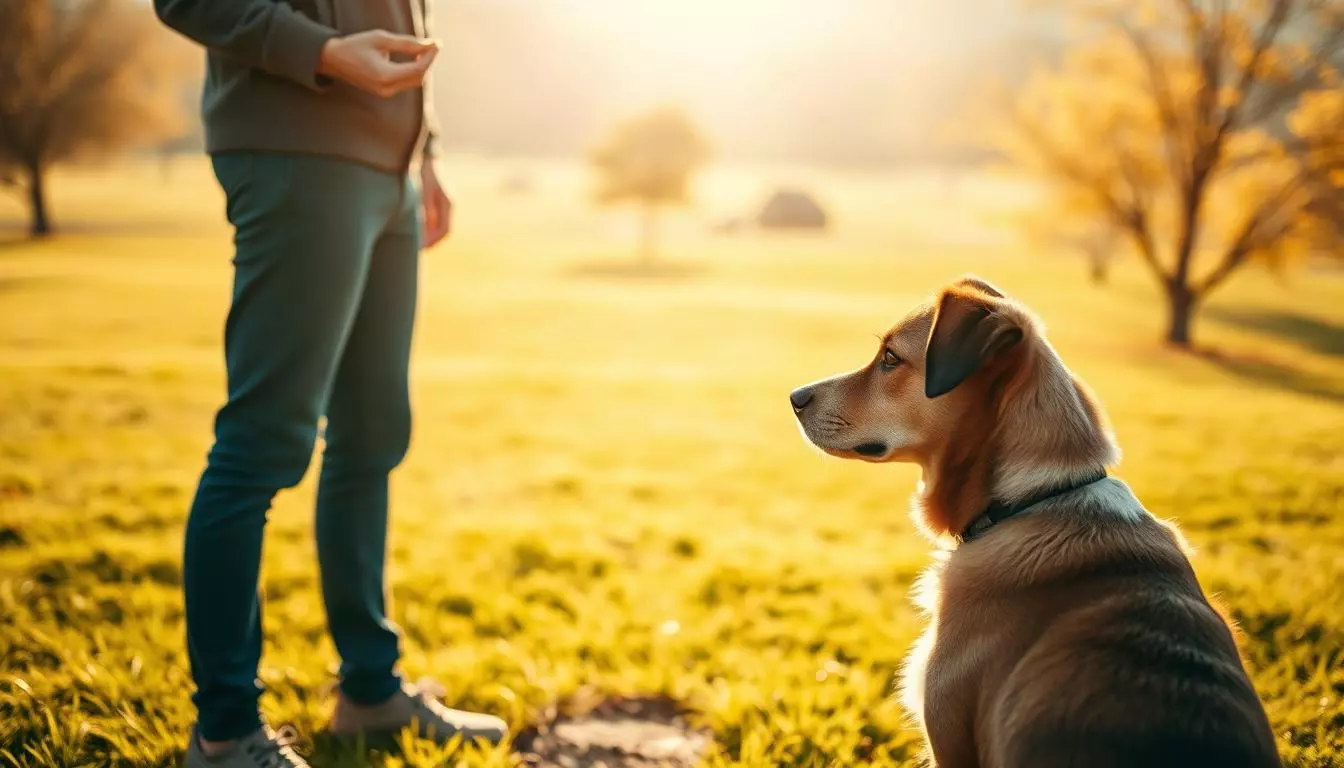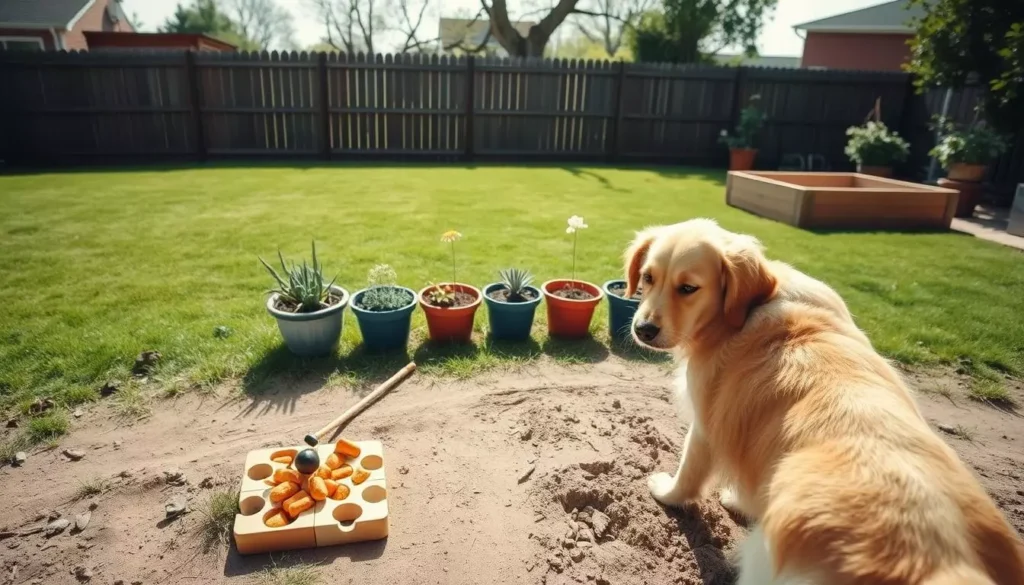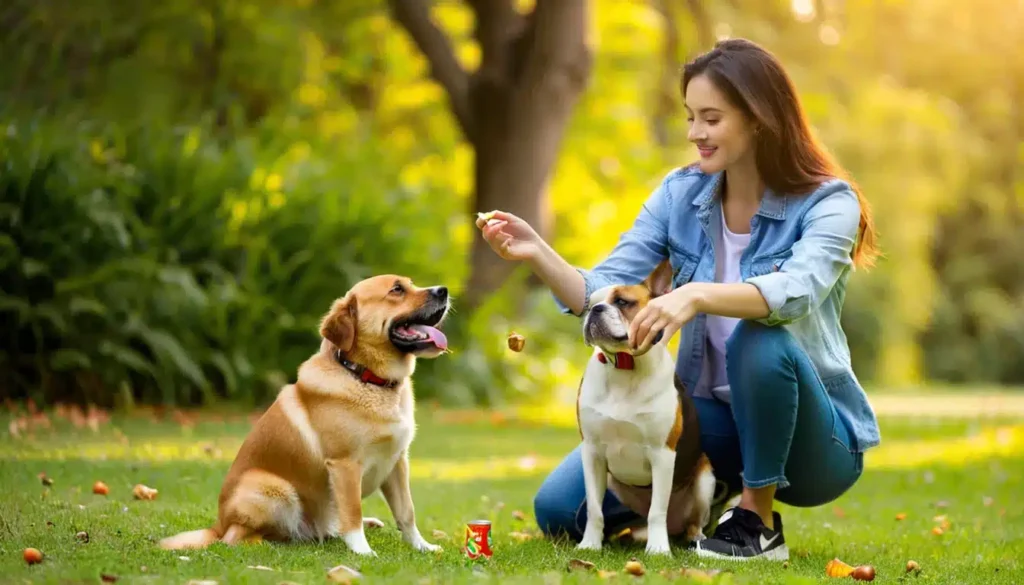Ever been in a park, watching your dog chase a squirrel while ignoring your commands? It's a common sight. Improving your dog's focus is more than just training. It's about building a strong bond that makes our lives better.
Just like we work on our concentration, our dogs need exercises to improve theirs. In this article, we'll look at fun ways to boost your dog's focus. This will help teach them obedience and other important skills. Let's start a journey to a more attentive pet, one step at a time.
Key Takeaways
- Understanding the significance of canine concentration exercises for effective training.
- Identifying the behaviors that indicate whether your dog is truly paying attention.
- Recognizing the benefits of improved focus for obedience skills and your dog's overall behavior.
- Learning how to implement effective exercises that boost your dog's attention.
- Emphasizing the role of positive reinforcement in developing focus.
- Gaining insights into real-world applications of focus training.
Understanding Your Dog's Attention
A dog's focus is key for training. Without it, teaching new skills is tough. Attention training helps dogs stay focused on their handler. I often wonder, why does my dog keep looking around? This shows they might not be focused, so it's crucial to know if they're really paying attention.
Why Focus is Crucial in Dog Training
Focus is very important in dog training. When my dog is focused, he learns and responds better. A dog that's not distracted will follow commands well. Training goes smoother when they're focused.
How to Identify If Your Dog is Paying Attention
It's important to know if your dog is paying attention. I look for certain signs, like:
- Making eye contact with me
- Following my movements
- Responding to commands promptly
- Exhibiting calm body language
If my dog seems distracted, I need to find ways to get his attention. By watching these signs, I can make training sessions more effective.
Benefits of Strong Canine Focus
Understanding the benefits of strong canine focus can greatly improve our training sessions and our bond. Dog obedience training focus drills help my dog follow commands better. They also deepen our connection.
This focus is key for a calm and efficient learning environment. It makes training more effective.
Enhanced Obedience Skills
When my dog stays focused during training, their obedience skills improve. Dogs with strong focus learn commands faster. Focus activities make training more effective.
This leads to a well-behaved pet. It makes our daily life together better.
A Stronger Bond Between You and Your Dog
Dog training is about trust and communication, not just commands. A focused dog builds a strong connection with me. This connection makes my pet feel secure and happy.
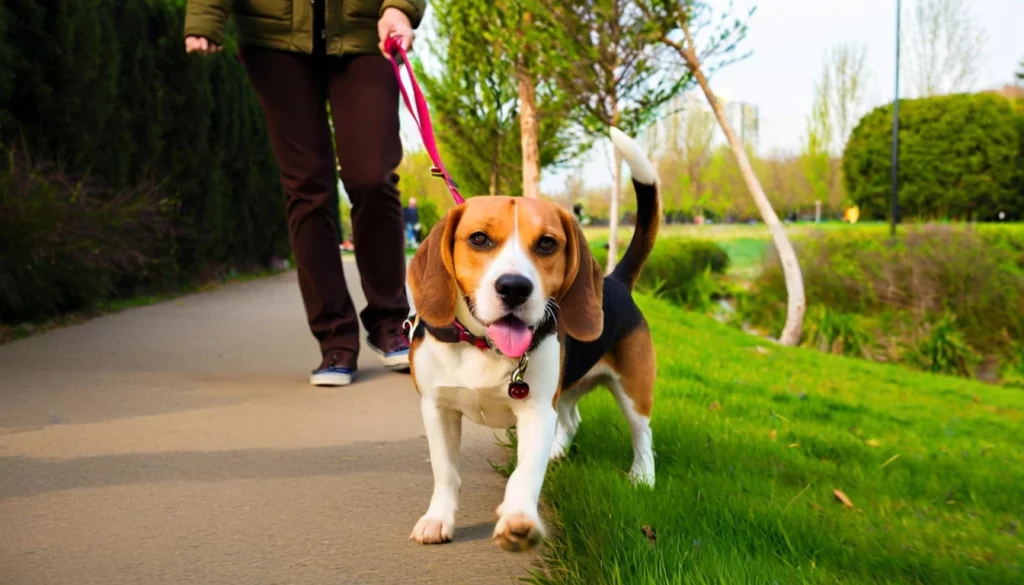
Dog Training Focus Exercises
Effective dog training starts with understanding key principles. Mental focus exercises for dogs boost their attention and strengthen the bond with their owners. These principles are the base of successful training, teaching discipline and quick responses.
Introducing Basic Training Principles
First, we need to establish core training principles. Consistency is essential for dogs to know what's expected. A routine helps a lot in keeping their focus sharp.
Short but frequent training sessions keep their interest high. This method keeps their attention keen and eager.
Importance of Positive Reinforcement in Training
Positive reinforcement is crucial in teaching dogs to focus and follow commands. I use rewards like treats, praise, or playtime in my training. This method makes good behavior positive, encouraging dogs to stay focused.
By rewarding the right actions, my dog learns to link their behavior with good results. This boosts their focus and engagement.
How to Get Your Dog’s Attention
Getting your dog's attention is key for good training. I've found some effective ways to help your dog focus. By making the right environment and using fun methods, we can improve their attention. The main thing is to be consistent and keep them engaged.
Effective Strategies for Gaining Focus
There are several ways to get your dog's attention. Here are a few:
- Start with a quiet space to minimize distractions.
- Use treats as rewards for maintaining eye contact.
- Introduce engaging exercises that make training fun and interactive.
Keys to Maintaining Attention During Training
To keep your dog's focus, practice is essential. Here are some tips that work:
- Use enthusiastic tones when calling your dog.
- Incorporate short, varied training sessions to prevent boredom.
- Remain patient and encouraging, especially when your dog struggles to concentrate.
Eye Contact Training: A Fundamental Exercise
Teaching your dog to make eye contact is key in attention training. It helps them focus and builds a strong bond with you. When your dog looks into your eyes, it's a rewarding experience that boosts their concentration.
Here are the steps and tips to teach your dog eye contact effectively.
Steps to Teach Eye Contact
- Start in a quiet place with few distractions.
- Hold a treat near your face and say your dog’s name.
- Wait for your dog to look at you. Reward them with the treat as soon as they do.
- Slowly increase how long they need to look at you before giving the treat.
- Keep practicing, adding more distractions as your dog gets better.
Tips for Successful Eye Contact Training
- Be patient. Every dog learns at their own speed.
- Use treats that really excite your dog.
- Keep training sessions short, about 5-10 minutes, to keep your dog interested.
- Always end on a positive note with praise and affection.
- Make this training part of your daily routine for consistent practice.
Impulse Control: Teaching Patience to Your Dog
Impulse control is key for dogs, helping them resist quick temptations. When I work on improving dog focus, I find it's crucial to teach patience. This training makes them calmer and better prepared for various situations.
A dog should stay seated when offered a treat, showing they value waiting for permission. This is a big part of impulse control.
Understanding Impulse Control in Dogs
Impulse control ensures dogs respond well in different situations, even with distractions. Dogs naturally react to things, so they need to learn to control their impulses. This makes training easier, as they're more likely to follow commands.
Exercises that focus on impulse control can greatly improve their attention and behavior.
Exercises for Impulse Control Development
Adding specific exercises to training sessions helps with impulse control. Here are some effective activities to consider:
- Leave It Command: Teach your dog to ignore objects by presenting a distraction, followed by rewarding them for maintaining their focus on you.
- Stay Exercises: Start with short durations and gradually increase the time your dog needs to remain in a given position.
- Wait at Doorways: Before opening doors, make your dog wait. This simple act reinforces patience and strengthens their impulse control.
These exercises improve your dog's ability to wait and strengthen your bond. Each successful command makes them more attentive and obedient.
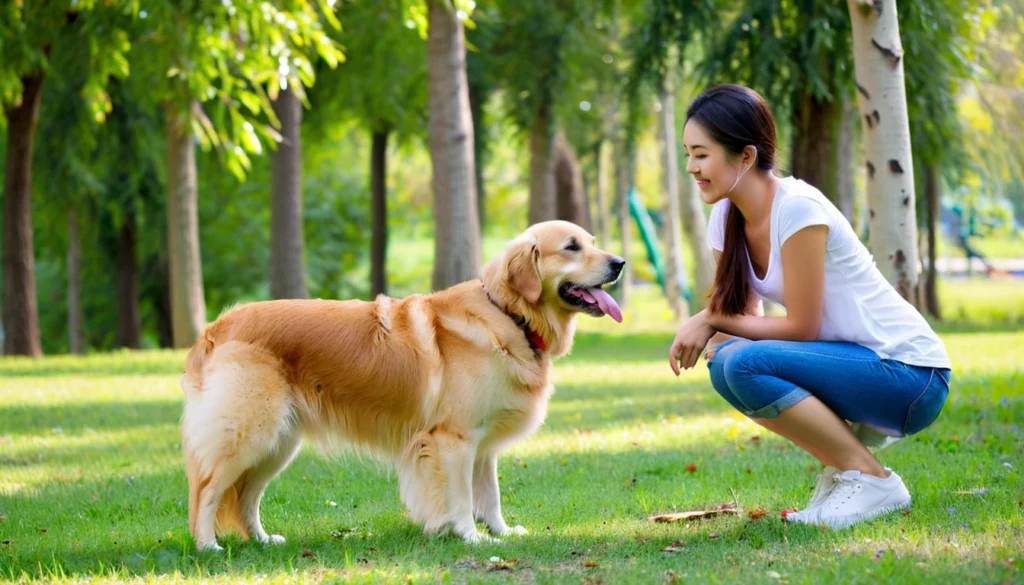
| Exercise | Description | Benefits |
|---|---|---|
| Leave It Command | Teach your dog to avoid distractions on command. | Improves focus, enhances self-control. |
| Stay Exercises | Instruct your dog to remain in place for increasing periods. | Builds patience, solidifies obedience. |
| Wait at Doorways | Require your dog to wait for permission before entering. | Instills discipline, mitigates impulsive behaviors. |
Hand Targeting for Focus and Attention
Hand targeting is a great way to improve your dog's focus and attention. It teaches your dog to touch their nose to your hand. This creates a clear way to communicate and helps manage distractions.
Using this method strengthens your bond with your dog. It makes dog training exercises more effective.
How to Implement Hand Targeting
To start, follow these easy steps:
- Begin in a quiet place with few distractions.
- Hold out your hand towards your dog, palm up.
- Use a treat to get your dog to come closer.
- When your dog touches your hand with their nose, praise them and give a treat.
- Keep practicing until your dog learns to associate the hand target with rewards.
Using Hand Targeting in Distraction Scenarios
When your dog gets the hang of it, this skill is super useful. Here's how to use it in tough situations:
- Start adding distractions while you practice hand targeting.
- Begin with small distractions and then make them bigger.
- Use the hand signal to get your dog's attention back to you if they get distracted.
- Keep rewarding and praising your dog for staying focused on the hand target.
This technique not only helps your dog stay focused. It also makes your training sessions more effective. By adding hand targeting to your routine, you have a great tool to keep your dog engaged and attentive.
Real-World Applications of Focus Training
Training my dog to stay focused in everyday life has changed everything. It's not just about better obedience. It also makes my dog safer. By doing mental exercises, they learn to ignore distractions and become more reliable friends.
Using Focus in Everyday Situations
Using focus training in daily life shows great results. Whether at the park or on a busy street, I practice commands. This helps my dog stay focused, even with distractions around.
When I ask for "sit" or "stay" in different situations, it boosts their confidence. They learn to trust me more.
Redirecting Distracted Dogs
My dog sometimes gets distracted by other pets or smells. That's when I use focus training to get their attention back. I reward them for looking at me, which keeps them engaged.
Simple commands like "look at me" also help. They help my dog stay focused in busy places.
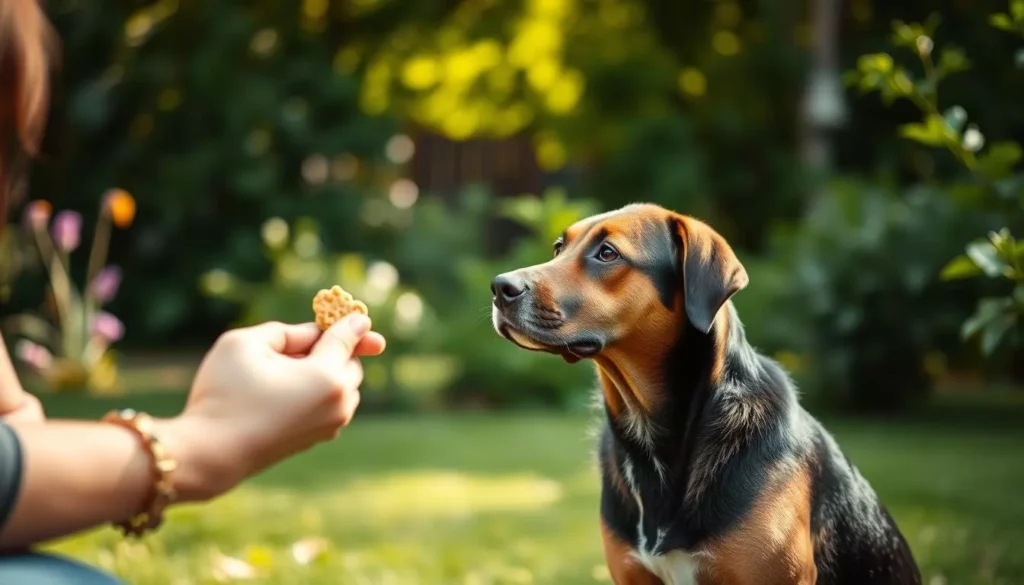
| Situation | Exercise | Outcome |
|---|---|---|
| Park with other dogs | Ask for 'sit' command | Maintains calmness |
| Busy street | Use 'look at me' command | Redirection from distractions |
| Home with loud noises | Practice 'stay' command | Increases focus amidst chaos |
Ways to Enhance Dog Focus During Activities
To improve my dog's focus, I use targeted exercises. These exercises boost their concentration and make our time together more enjoyable. I focus on adding these exercises to our daily routines and gradually introducing them in new places.
Incorporating Focus Exercises into Daily Routines
Doing focus exercises every day helps my dog stay focused. For example, during meals, I ask for eye contact before giving them food. This simple step helps them connect with me and stay focused.
During walks, I give them short commands like sit or stay. I reward them for listening, which strengthens our bond and our training. These moments fit easily into our daily life.
Building Focus in New Environments
Training in new places is key to improving my dog's focus. I start with simple exercises in a quiet area and then add distractions. For example, practicing commands in a busy park helps them stay focused.
By rewarding them with treats or praise, they learn to stay focused. Over time, they become more confident and our bond grows stronger.
Training with Distractions
Distractions can be tough during training, but they also help improve your dog's focus. Training in places with lots of things going on can really help your dog grow. It's important to add distractions slowly to help your dog stay focused, even when things get busy.
Progressively Adding Distractions to Training
Begin with simple distractions when you first start training. As your dog gets better, add more things to distract them. For example, start in a quiet room, then move to a backyard, and finally to a park with lots of people and animals.
Each step should be a little harder but still doable for your dog. This helps them feel confident and not overwhelmed.
How to Keep Your Dog Engaged Amidst Chaos
Keeping your dog's attention in busy places can be hard. Use fun toys and treats to keep them interested. Also, practice commands and focus drills often to help them stay on track.
With time, your dog will learn to listen to you even when there's a lot going on. This will make their training stronger and help them control their impulses better.
Monitoring Progress in Focus Training
It's important to track your dog's progress in focus training. This helps you see if the techniques are working. By watching your dog's behavior, you can spot signs of improvement in dog focus. If some methods don't work, it's key to adjust training techniques to keep improving.
Signs of Improvement in Your Dog’s Focus
There are several ways to tell if your dog's focus is getting better. Look for these signs:
- Increased eye contact during training sessions.
- Better response times to commands.
- Less distraction by external stimuli.
- Longer duration of sustained attention on tasks.
Seeing these signs means your training is likely on the right path.
Adjusting Training Techniques Based on Progress
If your dog isn't improving, it might be time to rethink your training. Here are some possible changes:
- Changing the environment to reduce distractions.
- Incorporating shorter training sessions with frequent breaks.
- Using different rewards that may be more motivating.
- Experimenting with varied commands or exercises.
These adjustments can help keep your dog engaged and improve their focus. By watching and adjusting, you can keep the training effective.
Maintaining Long-Term Focus Skills
To keep your dog's focus skills sharp, consistent training is key. This effort helps them improve over time. By repeating training, they become more reliable and responsive.
With the right strategy, your dog will always benefit from your hard work. This ensures they never lose the skills you've taught them.
The Importance of Consistent Training
Regular training is essential for keeping your dog's focus skills sharp. It reinforces their learning and makes them more flexible. By spacing out training sessions, you keep their skills fresh.
Without consistent training, your dog might go back to old habits. Making training a positive, lifelong experience is crucial.
Fun Ways to Reinforce Focus Skills
Adding fun to training makes it enjoyable for both you and your dog. Games like hide and seek capture their attention and teach focus. Interactive toys challenge their problem-solving skills in a fun way.
Short training sessions during walks can turn everyday moments into valuable learning experiences. This approach makes training a fun, interactive part of your daily routine.
Conclusion
Reflecting on how I've improved my dog's focus through training, I realize how crucial it is. This skill makes training easier and strengthens our bond. Exercises like eye contact and impulse control help a lot.
Practicing these exercises regularly improves my dog's concentration. This makes our home life better. It also helps my dog behave well and enjoy our time together.
The role of focus in dog training is huge. Spending time on these exercises and being patient helps us understand each other better. With focus, we can grow and trust each other more.

